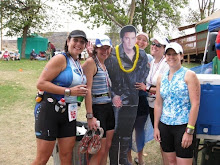Acute Injury: Heat or Ice?
Although there appears to be a controversy about heat vs. ice, there really isn't. Most who treat athletes on a regular basis agree that from the first day through the first 24 hours, ice is the treatment of choice. Heat tends to further injure friable blood vessel walls thereby promoting leaking of fluid and increasing swelling. Ice, on the other hand, also vasodilates and does not injure the vessel wall, and, in fact, helps its integrity. Ice is truly a great vasodilator. Although initially vasoconstricting in the first few minutes, it then promotes vasodilation, as evidenced by the red area on the skin after icing.After 24 hours we want to continue vasodilation to bring in blood flow with nutrients and cells to promote healing. The vessel wall has regained its integrity and both ice and heat work: after a 20 minute treatment, both result in an area that looks red due to increased blood flow. Which should you use then? I prefer ice because it temporarily deactivates receptors in the vessel walls, thereby keeping the vessels open for an additional 45 minutes following a twenty minute treatment. When heat is applied, as soon as the heat comes off, the vessel area begins to cool the receptors and the vessel walls are reactivated to normal blood flow. Therefore, ice gives you a longer treatment for a 20 minute application. Contrary to grandma's old advise of doing contrast ice then heat, etc., ice works better, 3 times a day for 30 minutes. The contrast baths only had you doing more treatment. And more treatment is always good to a point. You can ice up to six 20 minute treatments a day for the most effect.
Be careful of burning the skin with either treatment. My favorite way to ice is with a zip lock bag filled with ice and water. The water raises the temperature to 32 degrees so no need for a cloth between the ice and the skin and no freezer burn to the skin. I have also found using a bag of frozen peas useful but just as those frozen chemical packs, they can get too cold so be careful about having a cloth between your skin and the pack.
Enjoy the ride.
Ask the Running DocDr. Lewis G. Maharam is the world’s premier running physician. He is medical director of Competitor Group’s Musical Marathons and The Leukemia & Lymphoma Society’s Team in Training program, and serves as Chairman of the Board of Governors, International Marathon Medical Directors Association. He is former medical director of the New York Road Runners and ING New York City Marathon.





















1 comment:
i am a fan of ice, and even keep a bag of peas at work for post swim shoulder icing!
Post a Comment